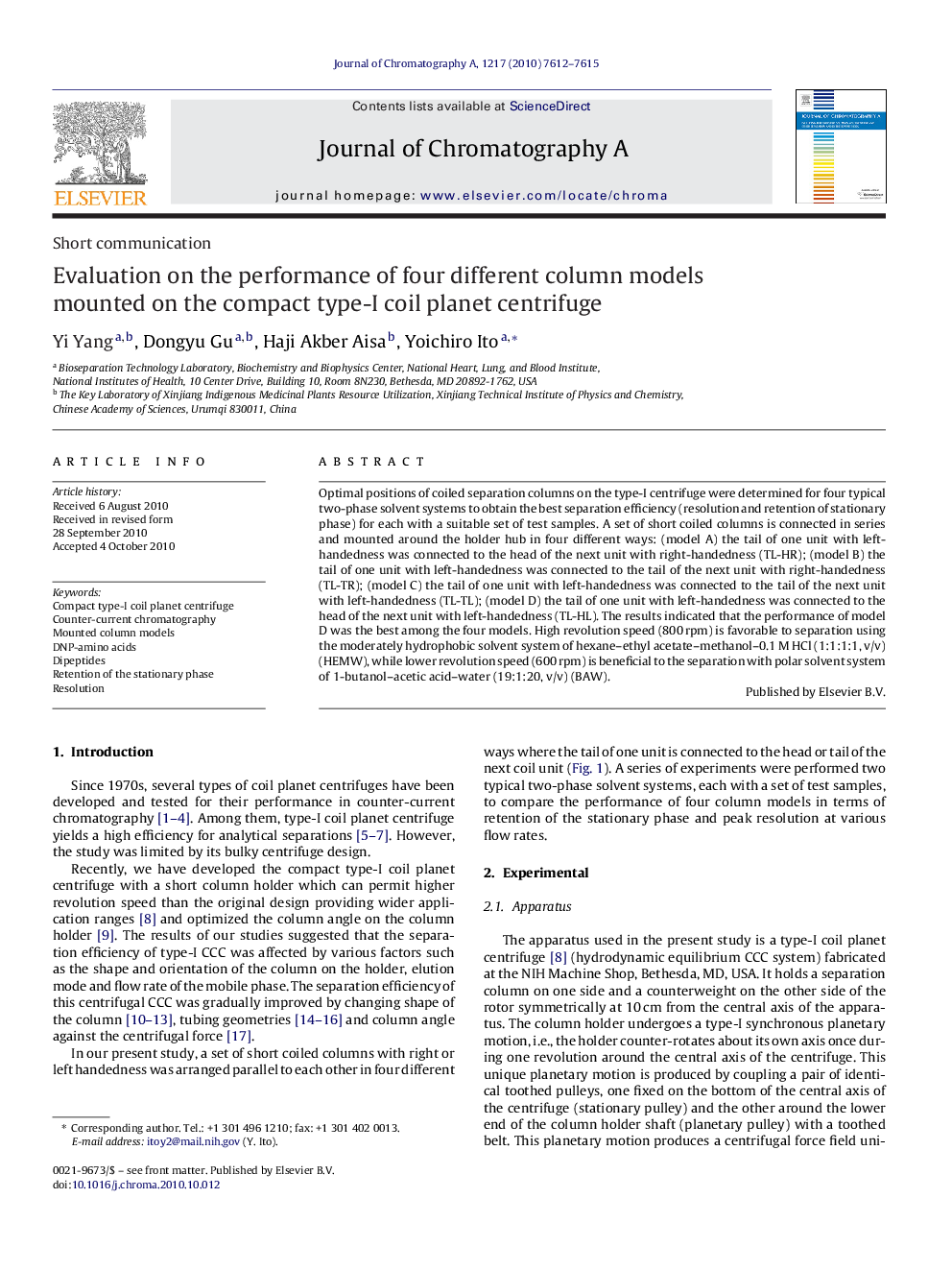| کد مقاله | کد نشریه | سال انتشار | مقاله انگلیسی | نسخه تمام متن |
|---|---|---|---|---|
| 1203687 | 965121 | 2010 | 4 صفحه PDF | دانلود رایگان |

Optimal positions of coiled separation columns on the type-I centrifuge were determined for four typical two-phase solvent systems to obtain the best separation efficiency (resolution and retention of stationary phase) for each with a suitable set of test samples. A set of short coiled columns is connected in series and mounted around the holder hub in four different ways: (model A) the tail of one unit with left-handedness was connected to the head of the next unit with right-handedness (TL-HR); (model B) the tail of one unit with left-handedness was connected to the tail of the next unit with right-handedness (TL-TR); (model C) the tail of one unit with left-handedness was connected to the tail of the next unit with left-handedness (TL-TL); (model D) the tail of one unit with left-handedness was connected to the head of the next unit with left-handedness (TL-HL). The results indicated that the performance of model D was the best among the four models. High revolution speed (800 rpm) is favorable to separation using the moderately hydrophobic solvent system of hexane–ethyl acetate–methanol–0.1 M HCl (1:1:1:1, v/v) (HEMW), while lower revolution speed (600 rpm) is beneficial to the separation with polar solvent system of 1-butanol–acetic acid–water (19:1:20, v/v) (BAW).
Journal: Journal of Chromatography A - Volume 1217, Issue 48, 26 November 2010, Pages 7612–7615